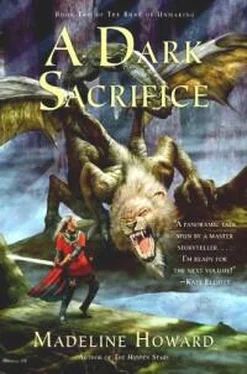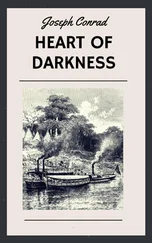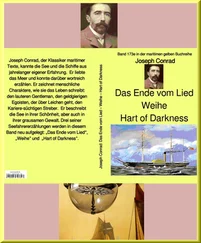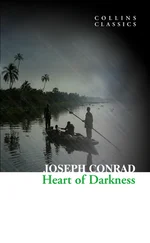A Dark Sacrifice
By Madeline Howard
This book is dedicated to the memory of my dear mother, Eleanor Waller, who is much missed, and to the swordsmen, magicians, and sorceresses who helped create video magic in the winter of 2006, and to Jack and Ethan Johnsen, who came to us like a miracle in a dark time.
Synopsis—The Hidden Stars
Silüren uilédani amffüriandem—All things are changing under the moon.
The first book of The Rune of Unmaking told of a world in a perilous state of flux. A century had passed since a disastrous conflict between the wizards of Alluinn and the mages of Otöi ended in their mutual destruction. The death of a thousand magicians sent a pulse of energy through the entire world of matter, altered the course of the moon, and ushered in an age of change and mutation. Two great empires, north and south, fell in a single hour, throwing the world into a state of anarchy that lasted for decades.
And then, unlooked-for, came an era of peace and prosperity.
Few guessed what was ahead when a new young queen was crowned on Phaôrax. Ouriána had ensnared her entire realm in webs of dark sorcery before even a shadow of a threat touched the minds of a new generation of wizards in their stronghold on the island of Leal. Proclaiming herself the Divine Incarnation of the Devouring Moon, she appointed twelve priests to perform her rites. They were men to begin with but magic twisted them; in their scarlet robes and changed appearance they came to be known as the Furiádhin, the Mutated Ones. From Ouriána’s great temple at Apharos the smoke of sacrifice rose to the heavens.
Not content with being worshipped as a goddess in her own kingdom, Ouriána manufactured a claim to the vacant throne of the northern empire, declaring war on all who opposed her. Leading the opposition were the High King Réodan, on Thäerie, and the wizards of Leal.
The war dragged on for years as Ouriána’s magician-priests led her armies to victory after victory. Those who resisted her had but one hope, an obscure prophecy that out of Ouriána’s own house and bloodline would come the one capable of overthrowing her rule and restoring peace. But the self-styled Empress-Goddess cast over her twin sister, Nimenoë, a curse to render her barren. For although Princess Nimenoë never joined Ouriána’s enemies, she could not be counted among the Empress’s friends.
Despite the curse, Nimenoë eventually did conceive a daughter, though at the cost of her own life.
Present at the birth on Thäerie were three wizards. Well aware that Ouriána would want the infant killed, they agreed that Éireamhóine, the more powerful of the three, should take the baby on a winter journey across the wide northern continent. Once he reached a place of safety, he would raise the child in secret, until she came of an age to fulfill the prophecy.
But Ouriána, by means of her dark arts, had learned of the child’s birth and the wizard’s plan, and sent six Furiádhin in pursuit. High in the mountains of the Cadmin Aernan the priests did battle with Éireamhóine. That battle and its deadly consequences were felt by wizards and magicians across the world; everyone was convinced that Éireamhóine, Luenil the nursemaid, and the infant princess were dead.
Nineteen years of resistance passed, but Ouriána’s victory seemed inevitable. In order to put heart into his allies and discuss new strategies, King Réodan summoned them to a council at the wizards’ Scholia on Leal.
King Réodan’s council was electrified by the arrival of a wandering wizard who revealed that he had seen a young woman in the far northern kingdom of Skyrra who was undoubtedly the lost princess, the child of the prophecy. The Skyrrans knew her as Winloki, niece to their king, Ristil, but the wanderer was able to present convincing evidence that she was indeed Nimenöe’s daughter.
In order to recover the princess, the council decided to send a secret embassy—an embassy so small it would never attract Ouriána’s attention—to inform her of her true name and destiny, and convince her to return to Thäerie. Present among them were Sindérian, a young healer, and Faolein, her father, a wizard of repute. They were joined by the half-Faey prince Ruan, among others.
The travellers set sail, hoping to make most of their journey by sea, but after an attack by a water-dragon their ship was so badly damaged it was all she could do to limp into the nearest port—which happened to be in unfriendly territory. From that point on, perils beset their entire journey north. Faolein was bespelled out of his own body and into the form of a falcon. Thinking him dead, Ouriána set trap after trap for Sindérian, which the wizard’s daughter somehow always found a way to escape. Half convinced that someone or something more powerful was protecting the young healer, the Empress, in a rage of frustration at being thwarted where she had expected little resistance, wove a greater spell: an intricate curse called an aniffath. What made an aniffath so powerful—and insidious—was its ability to keep on growing and changing to suit the circumstances.
Meanwhile, hundreds of miles away in Skyrra, King Ristil fought a war of his own against the barbarian Eisenlonders. His adopted niece, Winloki, ignorant of her own origins, had grown into a beautiful, headstrong young woman and a gifted healer. Her desire to use her skills on the battlefield had been continually thwarted by King Ristil’s determination to keep her safe at home. But Winloki was equally determined. Taking the place of another young healer, she secretly joined an army led by Ristil’s son Prince Kivik, who was heading east to unite with a larger force. By the time that Kivik and his kinsman Skerry (who had been betrothed to Winloki in a childhood pact) discovered her presence, it was too late and too dangerous to send her back.
A clash with Eisenlonders soon taught Winloki that war was an uglier business than she had ever imagined. Kivik’s troops, unable to locate the armies of the King’s Marshalls, fought skirmish after skirmish, suffering great losses in doing so. It was beginning to look like the expedition was doomed.
Seeking a safe haven, they arrive at Tirfang, only to discover that it is already occupied by refugees and besieged by ice giants and the bearlike Varjolükka. Breaking through the siege, Kivik and his people reached the fortress, but were then trapped inside. Only Winloki seemed to realize that.
Voices of ice giants, thundering, tremendous, boomed in the distance.
Prince Kivik shivered and wrapped his patched green cloak more closely around him. The western sky had cleared, allowing the sun to shine out brightly, but a wicked, bitter wind blew down from higher peaks to the northeast. Gritting his teeth at the thought that this killing cold—unexpected, unseasonable—was likely to continue, he leaned across the pitted white stones of the parapet.
From his present vantage point, high on the outer walls, he could see a wide swath of snowy ground below the fortress and before the gates, where the enormous footprints of giants and the bearlike Varjolükka coming and going were pressed deep into the drifts. And even though he could not see them, he knew that a host of fierce white bears and blue-haired giants would be somewhere very near, patrolling the valley floor just beyond the range of his vision, or lurking in pinewoods along the valley walls, maintaining this siege that kept him and his men confined inside the ancient fortified city like rats in a trap.
Standing there with the wind lifting his light brown hair, King Ristil’s son felt a familiar rage and frustration building inside of him. Before him lay the muddy chaos of the snowy fields, littered with the frozen bodies of men, horses, and things that were neither beasts nor men, behind him a vast landscape of towers, spires, parapets, balconies, peaked roofs, and cupolas, all arrayed in a glittering, improbable armor of ice.
Читать дальше












